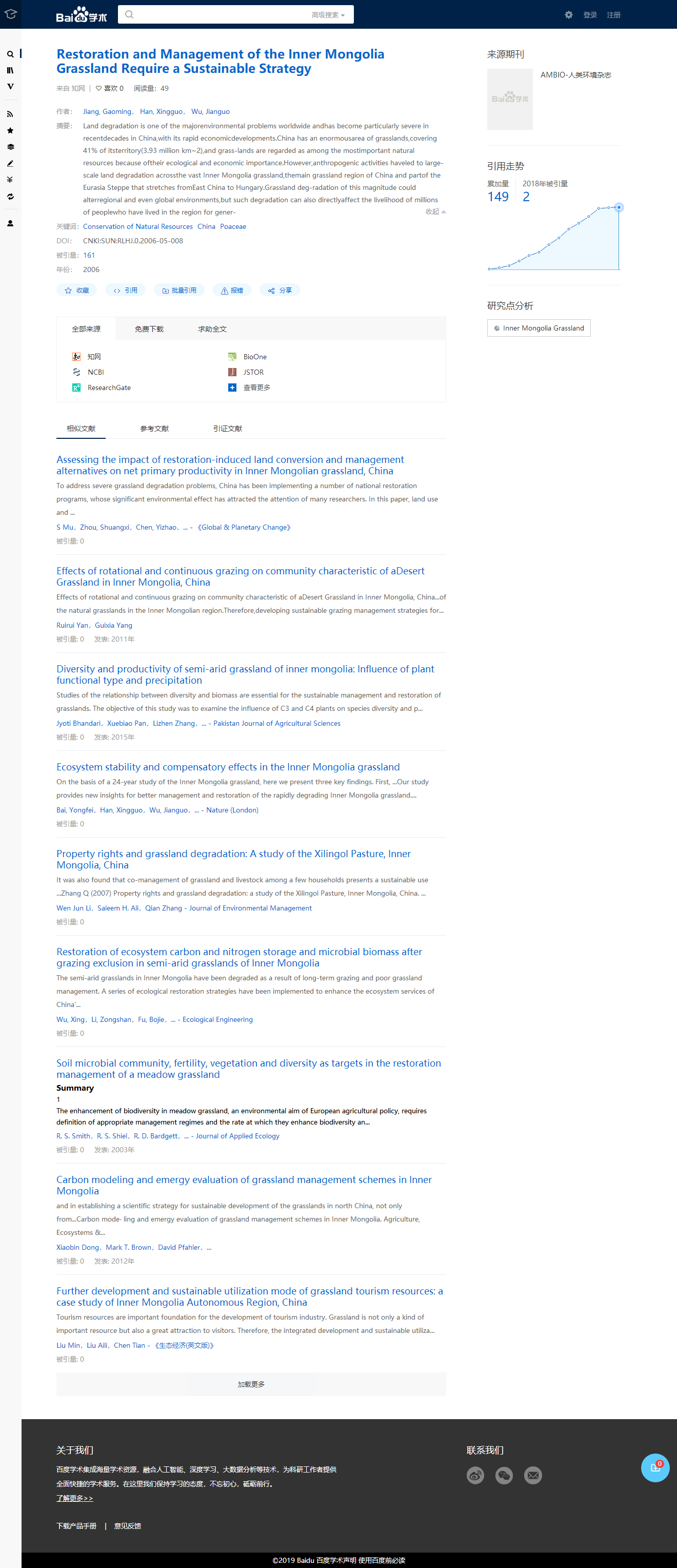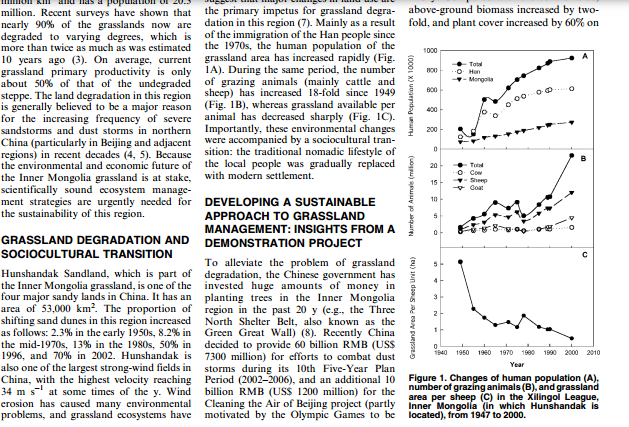博文
内蒙古草原生态恢复和管理需要可持续战略
|||
内蒙古草原生态恢复和管理需要可持续战略
蒋高明, 韩兴国 邬建国
中国科学院植物研究所植被与环境变化国家重点实验室
美国亚利桑那州立大学
人类环境杂志, 2006, 35(4): 269-70 (影响因子:4.103;本文SCI引用149次)
土地退化是全球性的重大环境问题之一。近几十年来,随着中国经济快速发展,土地退化问题日趋严重。中国草原面积巨大,占国土面积的41%(393万平方公里),草原因其生态和经济的重要性而被认为是最重要的自然资源之一。然而,人为活动导致了内蒙古辽阔草原的大规模土地退化。内蒙古面积110万平方公里,人口2030万。内蒙古是中国的主要草原地区,属于从中国东部延伸到匈牙利欧亚大草原的典型地段。如此严重的草原退化可能会改变区域乃至全球环境,也可能直接影响到在该地区生活了几代数百万人生活。最近调查显示,现在近90%的草原都有不同程度的退化,这是10年前估计的两倍多。目前草地初级生产力平均仅为未退化草地的50%左右。这一地区的土地退化被普遍认为是近几十年来中国北方(特别是北京及邻近地区)沙尘暴和沙尘暴频发的主要诱因。由于内蒙古草原的环境和经济前景岌岌可危,迫切需要科学合理的生态系统管理策略,以实现内蒙古草原的可持续发展。本文根据大型科学实验(4万亩地)结果,提出了通过政策调整,在保障牧民收入前提下,停止人为干扰包括不合理的草原造林,以自然之力恢复自然的对策出路。
Restoration and Management of the Inner Mongolia grassland requires a sustainable strategy
Jiang Gaoming*, Han Xingguo & Wu Jiangguo
State Key Laboratory of vegetation and environmental change, Institute of Botany, Chinese Academy of Sciences
Arizona State University,USA
AMBIO, 2006, 35(4): 269-70(IF=4.103;SCI Citation 149)
Land degradation is one of the major environmental problems worldwide and has become particularly severe in recent decades in China, with its rapid economic developments. China has an enormous area of grasslands, covering 41% of its territory (3.93 million km2 ), and grasslands are regarded as among the most important natural resources because of their ecological and economic importance. However, anthropogenic activities have led to large-scale land degradation across the vast Inner Mongolia grassland, the main grassland region of China and part of the Eurasia Steppe that stretches from East China to Hungary. Grassland degradation of this magnitude could alter regional and even global environments, but such degradation can also directly affect the livelihood of millions of people who have lived in the region for generations. Inner Mongolia covers an area of 1.1 million km2 and has a population of 20.3 million. Recent surveys have shown that nearly 90% of the grasslands now are degraded to varying degrees, which is more than twice as much as was estimated 10 years ago. On average, current grassland primary productivity is only about 50% of that of the undegraded steppe. The land degradation in this region is generally believed to be a major reason for the increasing frequency of severe sandstorms and dust storms in northern China (particularly in Beijing and adjacent regions) in recent decades. Because the environmental and economic future of the Inner Mongolia grassland is at stake, scientifically sound ecosystem management strategies are urgently needed for the sustainability of this region. Based on the results of a large-scale scientific experiment (2667 ha), this paper puts forward the viewpoint that through policy adjustment, on the premise of ensuring herdsmen's income, stopping human interference, including unreasonable grassland afforestation, and restoring degraded grassland with the nature process.



https://blog.sciencenet.cn/blog-475-1206714.html
上一篇:臭氧对不同年代推广的冬小麦光合作用和生长的影响
下一篇:有机肥对中国温带农田土壤微生物群落多样性及土壤微环境的影响